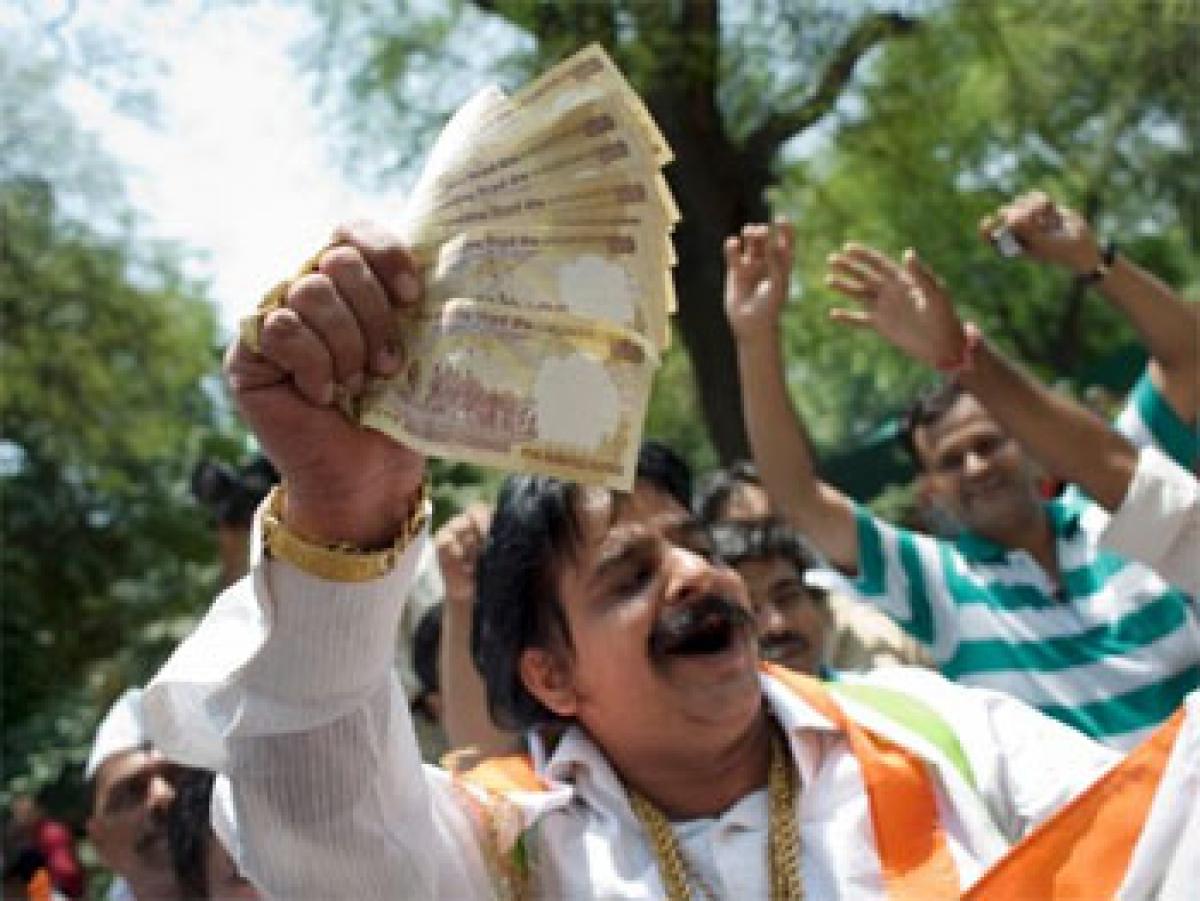Live
- ‘Vere Level Office’ trailer showcases a unique office sitcom
- Vivek-Mervin to make Tollywood debut with ‘RaPo22’
- Telangana Rejects Adani Foundation’s Rs.100 Crore CSR Grant for Young India Skills University
- Hebahstuns with timeless elegance
- Vijay Deverakonda's Rowdy Wear Shines as Iconic Indian Streetwear at Outlook India Business Awards 2024
- Manglishines bright with ‘Ustaad Bismillah Khan YuvaPuraskar’
- Time to make Indian GI-tagged products advance from ‘Gaon Se Global’: Minister
- PM Vishwakarma Yojana empowers women in J&K's Poonch to pursue self-employment
- ‘Kannappa’ release date announced at Shri Mahakaleshwar Temple in Ujjain
- PM Matsya Sampada Yojana opens doors of employment in Bihar’s Nalanda
Just In

While the prices of pulses, onions, vegetables like tomato and rice are shooting up making them inaccessible to an average Indian, the luxury market is increasing in India. This indicates widening inequalities in the country that have reached a preposterous level.
 While the prices of pulses, onions, vegetables like tomato and rice are shooting up making them inaccessible to an average Indian, the luxury market is increasing in India. This indicates widening inequalities in the country that have reached a preposterous level.
While the prices of pulses, onions, vegetables like tomato and rice are shooting up making them inaccessible to an average Indian, the luxury market is increasing in India. This indicates widening inequalities in the country that have reached a preposterous level.
It also reflects on the economic trajectory that emphasises on luxury consumption at the cost of mass consumption goods and services. Such an exclusionist paradigm makes the country vulnerable to social and economic unrest.
Such a trend has macro economic implications too. The conspicuous consumption of the rich accompanied by contraction of mass consumption would curtail aggregate domestic demand thereby leading to shrinking domestic market which insulated India from global recession.
A recent report by investment bank Credit Suisse stated that top 1% in India own more than half of the country’s total wealth. The richest 5% own 68.6% of the country’s wealth, while the top 10% have 76.3%. At the other end of the pyramid, the poorer half jostles for 4.1% of the nation’s wealth.
Thus the coexistence of islands of prosperity in an ocean of deprivation is resulting in India’s unprecedented boom towards luxury consumption amidst abominably high levels of multiple mass deprivation. In an interesting analysis, Smita Tripathi writes in Business World, November, 2015: India’s wealthy are no different from those around the world – they eat, sleep and breathe luxury. Most often this luxury consumption is also met through imports impacting negatively on country’s Current Account Deficit (CAD).
Thus, the shift towards luxury consumption increases jobs elsewhere rather than in India. On the contrary, as suggested by the National Sample Surveys, about 60 per cent of the monthly per capita expenditure of the poor in India is only on food thus severely restricting the domestic demand for industrial goods and modern services.
According to a report from Euromonitor International, India is the fastest growing emerging market for luxury goods. India’s luxury market will grow 86 per cent in constant value terms between 2013 and 2018. India’s luxury goods market has been growing by more than $ 255 million a year in absolute terms considerably stronger than even Singapore and Australia.
This phenomenon is a result of growing middle class which is an acceptable demographic transition but is also more due to grotesque inequalities. The number of ultra high net worth households (those with a net worth of above Rs. 25 crore )has increased from 1,17,000 in 2013-14 to 1,37,100 in 2014-15 and is projected to grow to 3,48,000 in 2019-20, according to the Top of the Pyramid 2015 report by Kotak Wealth Management.
Luxury car sales are expected to triple by 2020, estimates the credit agency ICRA. This is only an illustration. The same is true with other luxury goods and services.
All this is not to celebrate India’s prosperity. But, the concern is rising tide of wealth is not lifting every family. The insatiable appetite for luxury consumption publicised by the dazzling world of market can create a revolution of rising frustrations in a demand constrained economy. Emphasis on growth with jobs, growth with equity and accompanying drive towards mass consumption can create a sustainable Indian economy and stable society.

© 2024 Hyderabad Media House Limited/The Hans India. All rights reserved. Powered by hocalwire.com







